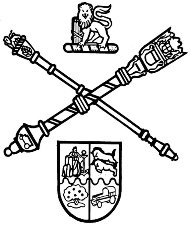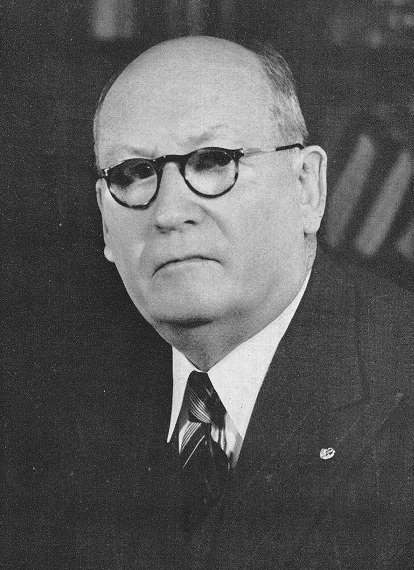|
Representation Of Natives Act 1936
The Representation of Natives Act No 12 of 1936 (commenced 10 July) was legislation passed in South Africa which further reduced black rights at the time. The Cape province had a qualified franchise which had allowed a small number of blacks in the Cape to vote for the common roll (although not to sit in parliament) in terms of the Cape Qualified Franchise. The qualified franchise dated back to the pre-Union period, when the Cape was a separate British colony; it also excluded poorer white men. The 1936 Act removed blacks to a separate roll – and halted the right to run for office; other earlier legislation removed the qualifications imposed in the Cape on whites. With this act, the small black elite - most blacks never had the vote - were removed from the common rolls on which they had been able to register since 1854. Chiefs, local councils, urban advisory boards and election committees in all provinces were to elect four whites to the senate by a system of block voting. The ... [...More Info...] [...Related Items...] OR: [Wikipedia] [Google] [Baidu] |
Parliament Of South Africa
The Parliament of the Republic of South Africa is South Africa's legislature; under the present Constitution of South Africa, the bicameral Parliament comprises a National Assembly and a National Council of Provinces. The current twenty-seventh Parliament was first convened on 22 May 2019. From 1910 to 1994, members of Parliament were elected chiefly by the South African white minority. The first elections with universal suffrage were held in 1994. Both chambers held their meetings in the Houses of Parliament, Cape Town that were built 1875–1884. A fire broke out within the buildings in early January 2022, destroying the session room of the National Assembly. The National Assembly will temporarily meet at the Good Hope Chamber. History Before 1910 The predecessor of the Parliament of South Africa, before the 1910 Union of South Africa, was the bicameral Parliament of the Cape of Good Hope. This was composed of the House of Assembly (the lower house) and the Legislati ... [...More Info...] [...Related Items...] OR: [Wikipedia] [Google] [Baidu] |
Minister Of Bantu Administration And Development, And Bantu Education ''
{{disambiguation ...
Minister may refer to: * Minister (Christianity), a Christian cleric ** Minister (Catholic Church) * Minister (government), a member of government who heads a ministry (government department) ** Minister without portfolio, a member of government with the rank of a normal minister but who doesn't head a ministry ** Shadow minister, a member of a Shadow Cabinet of the opposition ** Minister (Austria) * Minister (diplomacy), the rank of diplomat directly below ambassador * Ministerialis, a member of a noble class in the Holy Roman Empire * ''The Minister'', a 2011 French-Belgian film directed by Pierre Schöller See also * Ministry (other) * Minster (other) *''Yes Minister ''Yes Minister'' is a British political satire sitcom written by Antony Jay and Jonathan Lynn. Comprising three seven-episode series, it was first transmitted on BBC2 from 1980 to 1984. A sequel, ''Yes, Prime Minister'', ran for 16 episodes fr ... [...More Info...] [...Related Items...] OR: [Wikipedia] [Google] [Baidu] |
Promotion Of Bantu Self-government Act, 1959
The Promotion of Bantu Self-Government Act, 1959 (Act No. 46 of 1959, commenced 19 June; subsequently renamed the Promotion of Black Self-government Act, 1959 and later the Representation between the Republic of South Africa and Self-governing Territories Act, 1959) was an important piece of South African apartheid legislation that allowed for the transformation of traditional tribal lands into "fully fledged independent states Bantustans", which would supposedly provide for the right to self-determination of the country's black population. It also resulted in the abolition of parliamentary representation for black South Africans, an act furthered in 1970 with the passage of the Black Homeland Citizenship Act. Background The Act was designed to further the policy of so-called ''Grand Apartheid'', meaning the permanent partition of South Africa into national "homelands" for each supposed "people" or nation. In this plan, the ''Afrikaners'' (indigenized Dutch) people would control ... [...More Info...] [...Related Items...] OR: [Wikipedia] [Google] [Baidu] |
Separate Representation Of Voters Act, 1951
The Separate Representation of Voters Act No. 46 was introduced in South Africa on 18 June 1951. Part of the legislation during the apartheid era, the National Party introduced it to enforce racial segregation, and was part of a deliberate process to remove all non-white people from the voters' roll and revoke the Cape Qualified Franchise system. This act was declared invalid by the Supreme Court when challenged in the case of ''Harris v Minister of the Interior 1952(2) SA 428(AD)''; this gave rise to the Coloured vote constitutional crisis. The government, however, was able to circumvent the court's decision by increasing the number of Appellate Division judges from five to eleven, and increasing the size of the Senate from forty-eight to eighty-nine. These changes enabled the government to successfully introduce the South Africa Act Amendment Act No 9 of 2 March 1956, effectively overturning the Supreme Court's decision and revalidating the act. This amendment was repealed ... [...More Info...] [...Related Items...] OR: [Wikipedia] [Google] [Baidu] |
Cape Qualified Franchise
The Cape Qualified Franchise was the system of non-racial franchise that was adhered to in the Cape Colony, and in the Cape Province in the early years of the Union of South Africa. Qualifications for the right to vote at parliamentary elections were applied equally to all men, regardless of race. This local system of multi-racial suffrage was later gradually restricted, and eventually abolished, under various National Party and United Party governments. In 1930 white women were enfranchised, and in 1931 property qualifications for white voters were removed. In 1936 black voters were then removed from the common voters' rolls and allowed only to elect separate members in 1936, and subsequently denied all representation in the House of Assembly in 1960. Coloured voters similarly followed in 1958 and 1970, respectively. Provisions and early history Representative government (1853) The Cape Qualified Franchise first appeared in 1853, when the Cape Colony received represen ... [...More Info...] [...Related Items...] OR: [Wikipedia] [Google] [Baidu] |
Apartheid In South Africa
Apartheid (, especially South African English: , ; , "aparthood") was a system of institutionalised racial segregation that existed in South Africa and South West Africa (now Namibia) from 1948 to the early 1990s. Apartheid was characterised by an authoritarian political culture based on ''baasskap'' (boss-hood or boss-ship), which ensured that South Africa was dominated politically, socially, and economically by the nation's minority white population. According to this system of social stratification, white citizens had the highest status, followed by Indians and Coloureds, then black Africans. The economic legacy and social effects of apartheid continue to the present day. Broadly speaking, apartheid was delineated into ''petty apartheid'', which entailed the segregation of public facilities and social events, and ''grand apartheid'', which dictated housing and employment opportunities by race. The first apartheid law was the Prohibition of Mixed Marriages A ... [...More Info...] [...Related Items...] OR: [Wikipedia] [Google] [Baidu] |
Apartheid Laws In South Africa
Apartheid (, especially South African English: , ; , "aparthood") was a system of institutionalised racial segregation that existed in South Africa and South West Africa (now Namibia) from 1948 to the early 1990s. Apartheid was characterised by an authoritarian political culture based on ''baasskap'' (boss-hood or boss-ship), which ensured that South Africa was dominated politically, socially, and economically by the nation's minority white population. According to this system of social stratification, white citizens had the highest status, followed by Indians and Coloureds, then black Africans. The economic legacy and social effects of apartheid continue to the present day. Broadly speaking, apartheid was delineated into ''petty apartheid'', which entailed the segregation of public facilities and social events, and ''grand apartheid'', which dictated housing and employment opportunities by race. The first apartheid law was the Prohibition of Mixed Marriages A ... [...More Info...] [...Related Items...] OR: [Wikipedia] [Google] [Baidu] |
1936 In South African Law
Events January–February * January 20 – George V of the United Kingdom and the British Dominions and Emperor of India, dies at his Sandringham Estate. The Prince of Wales succeeds to the throne of the United Kingdom as King Edward VIII. * January 28 – Britain's King George V state funeral takes place in London and Windsor. He is buried at St George's Chapel, Windsor Castle * February 4 – Radium E (bismuth-210) becomes the first radioactive element to be made synthetically. * February 6 – The IV Olympic Winter Games open in Garmisch-Partenkirchen, Germany. * February 10– 19 – Second Italo-Ethiopian War: Battle of Amba Aradam – Italian forces gain a decisive tactical victory, effectively neutralizing the army of the Ethiopian Empire. * February 16 – 1936 Spanish general election: The left-wing Popular Front coalition takes a majority. * February 26 – February 26 Incident (二・二六事件, ''Niniroku Jiken''): The Imp ... [...More Info...] [...Related Items...] OR: [Wikipedia] [Google] [Baidu] |




